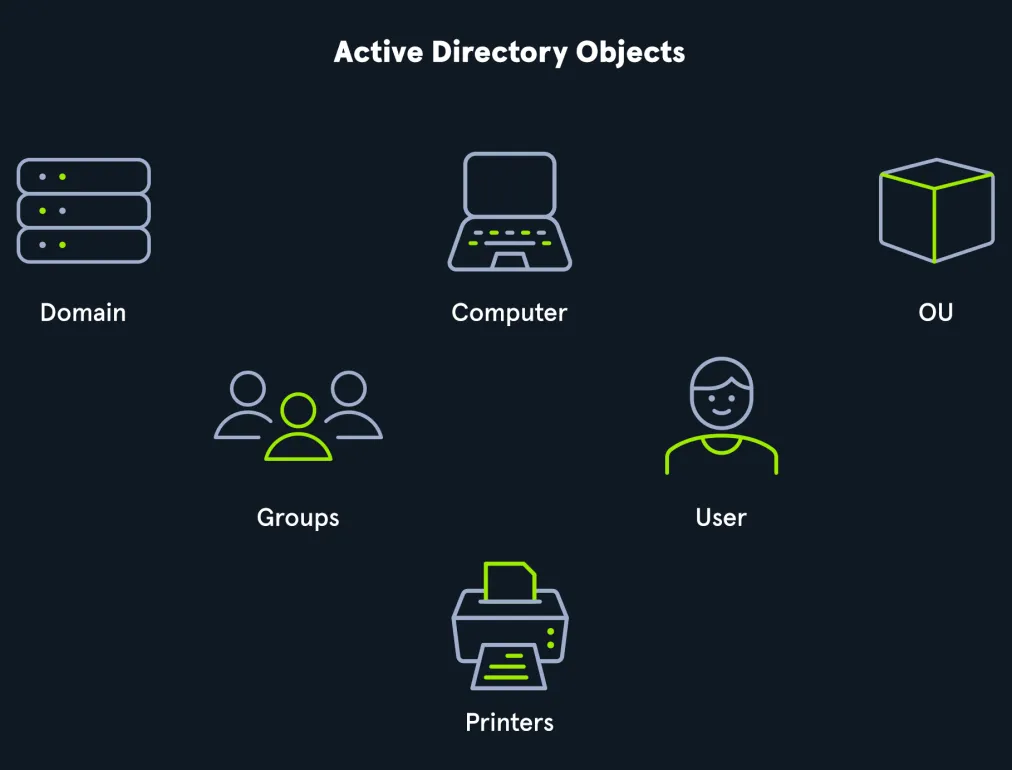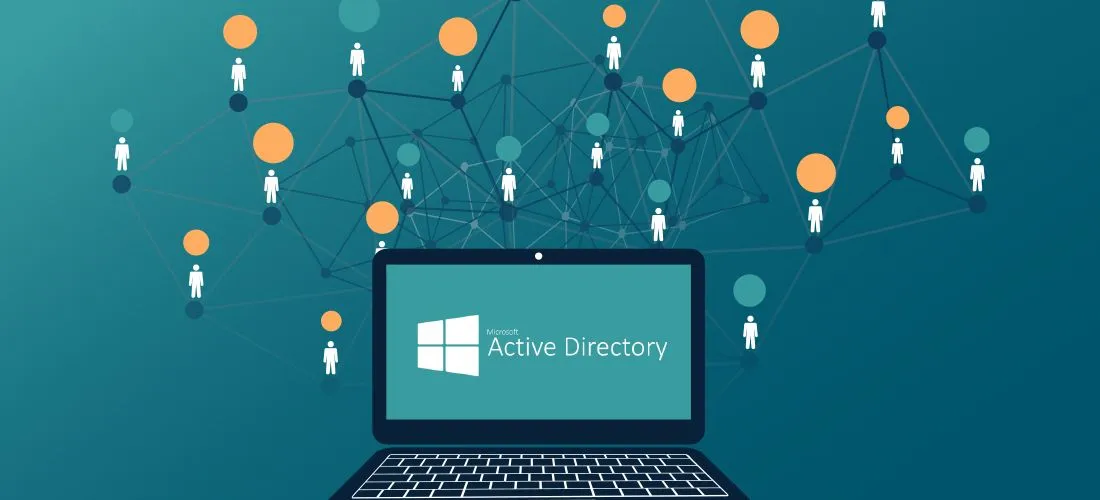Active Directory Objects
AD Objects

Users
- Users are accounts in Active Directory (AD) used to log in and access resources.
- They are leaf objects, meaning they can’t contain other objects. Each user has a Security Identifier (SID) and GUID, and can have many attributes like name, email, login time, manager, etc.
- AD can store over 800 user details, though most environments use only a few. Attackers often target users to gain access to systems.
Contacts
- Contacts represent external people, like vendors or customers.
- They also are leaf objects but are not security principals, meaning they don’t have a SID—just a GUID. They only store info like name, phone number, and email.
Printers
Printer objects represent network printers. Like contacts, they are leaf objects and not security principals. They have a GUID and details like name, driver, and port.
Computers
What are they?
Any device (workstation or server) that has joined the Active Directory (AD) domain.
Object type:
Leaf object (cannot contain other objects).
Security principal:
✅ Yes – has both a SID (Security Identifier) and GUID (Globally Unique Identifier).
Importance:
- Treated as identities, just like user accounts.
- Computers can run under NT AUTHORITY\SYSTEM, which has high privileges.
- If an attacker compromises a computer, they may gain access equivalent to a domain user, enabling lateral movement and enumeration of the network.
Shared Folders
What are they?
Objects that point to folders shared on the network from a specific computer.
Object type:
Leaf object.
Security principal:
❌ No – only has a GUID, not a SID.
Access control:
- Can be open to all (even unauthenticated users).
- Restricted to authenticated users (even low-privilege ones).
- Locked down to specific users or groups.
- Anyone not granted access is denied view or access.
Attributes include:
- Name
- System location
- Access permissions
Groups
What are they?
Objects used to manage multiple users, computers, or other groups.
Object type:
Container object – can include users, computers, and even other groups.
Security principal:
✅ Yes – has both SID and GUID.
Purpose:
- Simplifies permission management.
- Example: Assigning a group access to a server means all members inherit access.
Nested groups:
- Groups inside other groups.
- Can cause unintended permissions.
- Tools like BloodHound help visualize these relationships and potential attack paths.
Attributes include:
- Group name
- Description
- Members
- Membership in other groups
Organizational Units (OUs)
What are they?
Logical containers used to group similar AD objects (users, groups, computers).
Object type:
Container object.
Security principal:
❌ No – does not have a SID.
Purpose:
- Simplifies delegation of administrative tasks.
- Used for Group Policy application across sets of users/computers.
- Helps structure the AD domain (e.g., Employees > Marketing, HR, etc.).
Example use case:
Assign password reset rights to a Help Desk admin only within a specific OU.
Attributes include:
- Name
- Members
- Delegated permissions
- Linked Group Policies
Domain
What is it?
The core structure in Active Directory that holds users, computers, groups, and OUs.
Each domain has:
- Its own database.
- Its own set of policies (e.g., default domain password policy).
Purpose:
- Manages identity, access, and policy enforcement.
- Policies can include restrictions (like blocking CMD) or mapping network drives.
Domain Controllers (DCs)
What are they?
The central servers that run AD services.
Responsibilities:
- Authenticate users and computers.
- Enforce security policies.
- Manage and replicate all data in the domain.
Importance:
- Without DCs, users cannot log in or access resources.
- Compromising a DC = complete domain control.
Sites
What are they?
Logical groupings of computers and domain controllers connected via fast networks (e.g., LAN).
Purpose:
- Optimize replication traffic between DCs.
- Ensure efficient login and service response based on physical location.
Built-in
What is it?
A default container created when a domain is set up.
Purpose:
Holds predefined security groups (e.g., Administrators, Users, Guests).
Note:
These groups are used for basic permission assignments and role management.
Foreign Security Principals (FSPs)
What are they?
Placeholder objects for external users or groups from trusted domains or forests.
When are they created?
- Automatically, when an external object (user, group, computer) is added to a group in the local domain.
Attributes:
- Hold the SID of the external object.
- Located in the ForeignSecurityPrincipals container.
Purpose:
- Allow cross-domain/forest permissions while maintaining identity.
